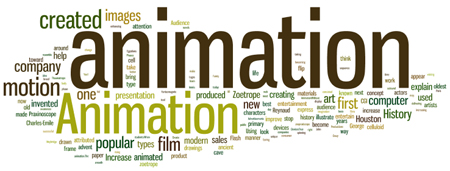The History of Animation

The History of Animation: The Beginning
The history of animation is a fascinating look at the way humans express themselves, and an intimate look at imagination and common interests. The first attempts at drawings that convey motion are found on cave walls and ancient pottery! While some may say this is not true animation, I would think that spinning the 5200 year old bowl unearthed in Iran would bring the images portrayed to life!
The History of Animation: The First Devices
True animation is attributed to devices created to entertain such as the zoetrope. The oldest known Zoetrope was created by Ting Huan in China, around 180 AD. It consisted of translucent paper or mica panels with art painted on them. When hung over a lamp rising heat would cause the zoetrope to spin, and the images to appear to move. The modern version of the Zoetrope would not be produced until 1834, by William George Horner. This cylindrical device is still used in animation courses to illustrate the concept of animation to students.
When I was a kid I would entertain myself by creating flip books on the corners of the pages of paperback novels. The first patented flip book is attributed to John Barnes Linnet in 1868, but I wonder if the concept is older. It certainly is the basis of modern animation which employs characters drawn, one frame or cell at a time, with a minor change from one frame to the next.
Various devices were invented over the years to astound people with art in motion. The Magic Lantern, the Thaumatrope, the Phenakistoscope, and the reinvention of the Zoetrope all contributed to modern day animation. Charles-Emile Reynaud, building on the ideas of his predecessors, invented the Praxinoscope, which was commercially produced in his workshop in Paris. Building on that idea he later invented the Projection Praxinoscope. Finally, animation created for projection onto a screen was born.
The History of Animation: The Pioneers of Animation
Without the pioneers of film, Eadweard Muybridge with his zoopraxiscope, Thomas Edison inventing the kinetiscope, or George Eastman and his nitrocellulose based film strips, we would not have the animation produced today. It was because of these greats that the next phase of animation would take flight. With the advent of celluloid Charles-Emile Reynaud had a new medium to work with. He combined his earlier inventions with the new and created Theatre Optique, the original cinema for the public. His first film of five hundred hand drawn images was presented in 1892.
When we think of the history of animation, we are generally talking about the first animated films “Humorous Phases of Funny Faces” in 1906 and “Fantasmagorie” in1908 are the among the oldest film animations of record. It was film that fueled the fires of entertainment, giving artists a new way to express themselves, and delivering a new breed of artists. Where before art might be realistic or abstract, now whimsical art became more prevalent. Beginning with his animated short Plane Crazy, Walt Disney would build an empire out of animation.
The History of Animation: Modern Day 3D Animation and CGI
In the late 20th century animation met the computer age and CGI was created. 3D animation was finally achieved. In Avatar, CGI at it’s best, live actors wore specially designed outfits which mapped their body and facial movements then translated that to the computer generated images to bring life to animation. Now the faces of animation can resemble the actors voicing the models. Animation entertains young and old alike. It’s kind of hard to believe that it all started with some cave paintings and ancient pottery.
Interested in utilizing animation to improve your sales materials?
Contact us at 713.789.8699 to learn how we can help you improve sales with animation.


Comments are closed.